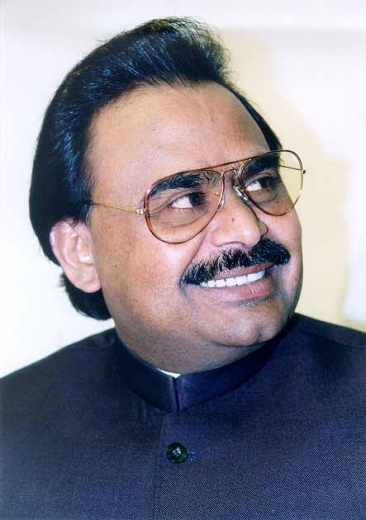Have Any Question About Pakistan, Ask Findpk?

|
              
Explore
Pakistan
|
Worldwide Travel & Tourism
[Ethnic
Groups]
[The
Baloch] [People
of Sindh] [People
of Punjab] [Saraiki
People] [Pashtuns
People] [Muhajir
Urdu-Speaking People] [Mountain
Tribes] [Religions] [Languages] [Festivals] [Arts
& Culture] [Folktales
From Pakistan] [Music
& Dance] [Art
& Craft] [Art
Gallries & Museums] [Cuisine
of Pakistan] [National
Symbols of Pakistan] [Slide
Show]
Muhajir
Urdu-Speaking People (Pakistan)
Muhajir (also known as Urdu-speaking people) (Urdu: مهاجر) is a term
used by and for those people of Pakistan who are predominantly
native Urdu speaking Muslims of British India, migrated to Pakistan
following independence in 1947. Sometimes, the term is used broadly
to also include Muslim Biharis (whose mother tongue is not Urdu but
one of the Bihari languages such as Magahi, Bhojpuri, Maithili) and
Muslim Gujaratis (whose mother tongue is Gujarati) who also speak
Urdu beside their mother tongue. Thus, the terms 'Muhajir' or
'Urdu-speaking' do not exactly define an ethnic group as such, since
many of these people came from diverse ethnicities as they migrated
from various parts of Northern and Central South Asia at
independence.
The Muhajirs are a multi-ethnic community who are partly descended
from Arabs, Persians, Afghans and Turks. The Muslims of Middle East
and Central Asia have historically, travelled to South Asia as
technocrats, bureaucrats, soldiers, traders, scientists, architects,
teachers, theologians and Sufis during the Islamic Sultanates and
Mughal Empire and settled permanently. Most Muhajirs have converted
to Islam during the Muslim rule of South Asia under the influence of
Sufis. It is estimated that around 30 to 35% of Muhajirs are of
Pashtun heritage. The Muhajir community also includes peoples of
Punjabi heritage. In broader terms, it also includes Memons, Bohras
and Ismailis that spoke Gujarati, Kutchi and Memoni languages and
are now assimilating into Muhajir community. The Bengali and
Rohingya refugees in Karachi are also assimilating into Muhajir
community. The uniting factors of Muhajirs are Islam and Urdu
language.
In Arabic, Muhajir refers to a person who has performed a Hijrat,
meaning migration. There were other migrants into Pakistan like the
Punjabi people (from East Punjab) but they did not need a separate
new identity as these people already formed a large part of the
population of the territory that became Pakistan at the time of
independence.

Altaf Hussain
(Urdu:
الطاف حسین)
(born 17
September 1953, Karachi) is a Pakistani politician, the founder and
leader of the
Muttahida Qaumi Movement. He lives, as a British citizen, in
voluntary exile in North London, United Kingdom, after seeking
political asylum in 1992.
Etymology
A crowd of Muslims at the Old Fort (Purana Qila) in Delhi, migrating
to Pakistan. (Manchester Guardian, 27 September 1947)Muhajir
(Arabic: مهاجر) is an Arabic word meaning immigrant or emigrant. In
the Islamic calendar Hejira starts when the Islamic prophet,
Muhammad and his companions left Mecca for Medina in what is known
as Hijra. They were called Muhajirun. The Arabic root word for
immigration and emigration is Hijrat.
Independence of British India
On 2 June 1947, the British government announced the plan to
Independence of Pakistan and India. On 18 July 18 1947, the British
Parliament passed the Indian Independence Act that finalized the
independence arrangement. The Government of India Act 1935 was
adapted to provide a legal framework for the two new dominions.
Two self governing countries legally came into existence at the
stroke of midnight on 15 August 1947. The ceremonies for the
transfer of power were held on 14 August 1947 at 9:20 AM in Governor
General House Karachi, so that the last British Viceroy, Lord
Mountbatten of Burma, could attend both the ceremony in Karachi as
well as the ceremony in Delhi.
Settling in Pakistan
After independence, a huge population exchange occurred between the
two newly-formed states. About 14.5 million people crossed the
borders: 7,226,000 Muslims came to the Dominion of Pakistan
(including East Bengal, later East Pakistan and now Bangladesh) from
the Union of India while 7,249,000 Hindus and Sikhs moved to India
from Pakistan and Bangladesh. About 5.5 million Muslims settled in
the Punjab and around 1.5 million settled in Sindh.
According to the 1951 Census, migrants made up 7 million people in
Pakistan, 6.3 million in West Pakistan and 700,000 in East Pakistan.
The majority were Punjabis who left East Punjab for West Punjab.
Rest was made up of a 100,000 Biharis who settled in East Pakistan
and a million from the United Provinces, Bombay Presidency and
Hyderabad who migrated to West Pakistan.[2][3] At the time of
partition, migrants from United Provinces made up only 2% of the
migrants and 3% of Pakistan's total population.[4]
Most of the migrants who settled in the Pakistani Punjab came from
the Indian Punjab, Haryana, Himachal Pradesh, Jammu and Kashmir and
Rajasthan. Most of the migrants who arrived in Sindh came from
northern and central urban centres of Indian states such as, Uttar
Pradesh, Bihar, Madhya Pradesh, Gujarat, Maharashtra, Hyderabad
Deccan and Rajasthan via the Wagah and Munabao borders. In addition
a limited number of 'Muhajirs' arrived by air or by sea.
The overwhelming majority of Urdu speakers who migrated from what is
now India were settled in the port city of Karachi, which was
capital of Pakistan at that time, in southern Sindh. The remainder
settled in other Sindh cities, notably Hyderabad, Sukkur, Nawabshah
and Mirpur Khas as well as in Punjab cities such as Lahore, Multan,
Bahawalpur, Faisalabad and Rawalpindi.
In Sindh two-thirds of the 1.5 million settled in urban areas in
1947. In the case of Karachi, an existing population of around
400,000 in 1947 turned into more than 1.3 million by 1953.
It is estimated around 30 to 35% of Muhajirs are of Pashtun
heritage. When the Pashtuns migrated to Muslim India from
Afghanistan, they settled in the Muslim majority areas. However the
Pashtuns of Afghanistan gradually lost their own language Pashto and
culture in India and adopted Urdu (The language of Muslims in India)
as their mother tongue. The Rohilla Pashtun formed one of the
largest Pashtun diaspora community in Uttar Pradesh, and have given
their name to the Rohilkhand region. After independence they
migrated to Pakistan, they were recognized as Muhajirs or Urdu
speakers as they have integrated with them over the centuries.
The Muhajir community also includes peoples of Punjabi heritage that
migrated and settled in Muslim majority areas in Uttar Pradesh
especially in Delhi. The Punjabi Saudagaran-e-Delhi are an entirely
Urdu speaking community, Punjabi ceased being the spoken language
from the eighteenth century onwards. After independence they
migrated to Pakistan, they were recognized as Muhajirs or Urdu
speakers as they have integrated with them over the centuries.
|





